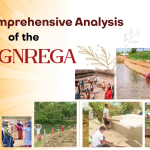 GOVERNMENT
OF INDIA
GOVERNMENT
OF INDIA
Please login using your email address as it is mandatory to access all the services of community.data.gov.in
 GOVERNMENT
OF INDIA
GOVERNMENT
OF INDIA
Major portion of India’s economy is based on agriculture and animal husbandry wherein milk production plays vital role. India is ranked first in production of milk in the world followed by United States, China, and Germany. Production of milk of India was around 140 million tonnes in 2013-14 according to NDDB. Datasets of milk production up to year 2013-2014 are published under department of animal husbandry of Ministry of Agriculture in Data portal of India (data.gov.in).
List of available Catalogs of milk production:
Let’s play with the dataset (https://data.gov.in/sites/default/files/datafile/Animal_Husbandry_TABLE1_2012-13.csv ) is dataset of milk production that contains information about milk production, human population and per capita availability of milk from 1950-51 to 2012-13.
Glimpse of data:
| Year – (March to February) | Milk Production – (million tonnes) | Human Population – (million nos.) | Per Capita Availability – (gram./day) |
| 1950-51 | 17 | 359 | 130 |
| 1955-56 | 19 | 393 | 132 |
| 1960-61 | 20 | 434 | 126 |
| 1968-69 | 21.2 | 518 | 112 |
| 1973-74 | 23.2 | 580 | 110 |
From the dataset, it is evident that production of milk has risen drastically like the population of India. In year 1950-51, the production of milk was 17 million tonnes and population was 359 million. In year 2012-13, the production of milk was 132.4 million tonnes and population was 1212 million that showed 678.82% of growth in milk production and 237.6% of growth in population. Given link (https://visualize.data.gov.in/?inst=693395423fa52d20ff75d11b2f235ce0&vid=6521# ) has time series plot of estimates of milk production from 1950-51 to 2012-13.it is shown as below.
Let’s find out how India will manage the per capita consumption of milk up to 2020. In the datasets we have discrete information from 1950-51 to 1973-74 and having continuous information form year 1979-80 to 2012-13. So, the analysis will be carried in two sets, first set that has complete year information from 1950-51 to 2012-13 and second set that has only continuous scale of year.
Convert Year format from 1950-51 to 1950 as shown in table, with this we will be able to take year as a numeric format to apply in linear model
| Year – (March to February) | year |
| 1950-51 | 1950 |
| 1955-56 | 1955 |
| 1960-61 | 1960 |
| 1968-69 | 1968 |
| 1973-74 | 1973 |
Now start with first set, we use simple linear model wherein time is independent variable and milk production is dependent variable.
Let year=Year, mp=milk production and pop=human population. Now I use R software to run simple linear model over this set.
Linear model: mp(milk production)= a + b*year & pop(population)= a + b*year
Result a=-3914.960 & b=1.999
On the basis of this result; In year 2020, the production of milk will be around 123.22 million tonnes with upper limit 150.40 and lower limit 96.04 million tonnes. Similarly human population will be around 1311.967 million with upper limit 1374.938 million and lower limit 1248.995 million.
In set 2, now run the same model by using continuous year.In year 2020, we will have 144.2078 million tonnes with lower limit 133.2897 and upper limit 155.1259. Similarly human population will be around 1360.614 million with lower limit 1350.522 million and upper limit 1370.706 million.

Comprehensive Analysis of the Mahatma Gandhi Natio...
This infographics on Comprehensive Analysis of the Mahatma Gandhi National Rural Employment Guarantee Act (MGNREGA)
Posted on: October 18th, 2023

First Census of Water Bodies in Haryana...
For the first time in the history of the country, the Ministry of Jal Shakti has conducted the first-ever census of water bodies in India. ...
Posted on: August 31st, 2023